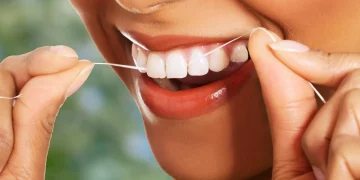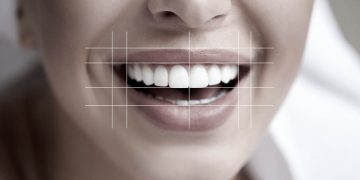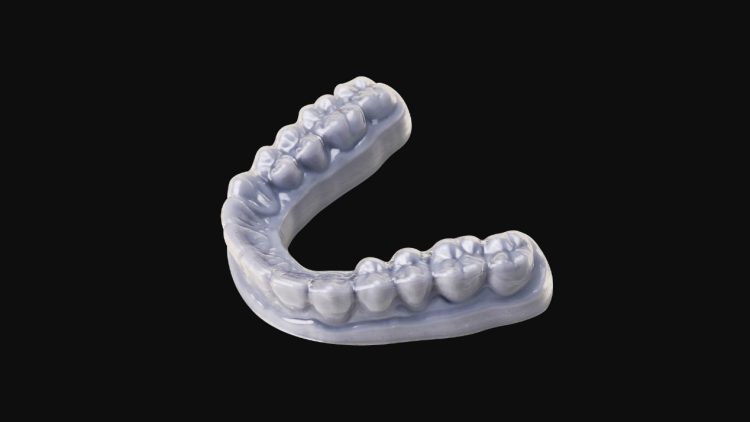In recent years, 3D printing has emerged as one of the most transformative technologies in dentistry, offering a range of applications that enhance both the efficiency of dental practices and the quality of patient care. From creating precise dental models to printing customized implants and aligners, 3D printing is quickly becoming a mainstay in modern dental procedures. But how exactly is it applied in dentistry, and what are the specific benefits it brings to patients? In this article, we’ll explore the extensive applications of 3D printing in dental care and how it improves patient convenience and treatment outcomes.
What is 3D Printing in Dentistry?
3D printing, also known as additive manufacturing, is a process that creates three-dimensional objects by building them layer by layer from a digital design. In dentistry, this technology is used to create a wide range of dental models, restorations, implants, and even surgical guides, allowing for incredibly precise and customized solutions tailored to each patient’s needs.
The process begins with taking digital scans of the patient’s mouth, which are then converted into a 3D model using specialized software. This model can be used to design dental appliances, prosthetics, or even surgical plans, all of which can be produced quickly and with high accuracy using 3D printers.
Key Applications of 3D Printing in Dentistry
1. Custom Restorations: Crowns, Bridges, and Veneers
Application: 3D printing is widely used to create custom dental restorations, such as crowns, bridges, and veneers. The digital scan of the patient’s teeth is used to design a precise and personalized restoration, which is then printed using a dental-grade material.
Benefits:
- Perfect Fit: Traditional methods of creating restorations often require impressions that can be uncomfortable and may not capture the exact details of a patient’s teeth. With 3D printing, the restoration is perfectly tailored to the patient’s dental anatomy, ensuring a better fit.
- Faster Turnaround: Traditional methods can take several weeks to produce restorations, requiring multiple appointments. 3D printing can produce crowns or bridges in one visit, allowing for same-day restorations.
- Improved Aesthetics: The precision of 3D printing results in better aesthetics. Crowns and veneers made through 3D printing are more likely to blend seamlessly with the natural teeth.
2. Orthodontic Aligners and Appliances
Application: 3D printing is used to create customized orthodontic appliances, such as clear aligners, retainers, and spacers. Using digital impressions or scans, a 3D model of the patient’s teeth is created to design a treatment plan that addresses their specific alignment needs.
Benefits:
- Customization: Clear aligners made with 3D printing technology can be tailored to the shape and position of each tooth, offering a highly personalized treatment plan.
- Comfort: Since the aligners are made with precision, they tend to fit better, leading to fewer adjustments and a more comfortable treatment experience.
- Speed: With 3D printing, aligners and other orthodontic appliances can be produced quickly and in large quantities, reducing wait times for patients.
- Less Visibility: Clear aligners, produced using 3D printing, are virtually invisible, making them a popular choice for those who prefer a discreet treatment option.
3. Implantology and Custom Implants
Application: In implant dentistry, 3D printing is used to create custom dental implants and implant guides. 3D printed guides help dentists to place implants with greater accuracy by mapping out the ideal position in the patient’s jaw.
Benefits:
- Precision Implant Placement: Using a 3D-printed surgical guide ensures that implants are placed with high precision, reducing the chances of complications and improving overall treatment success.
- Customized Implants: Implants can be customized based on the patient’s jawbone structure, leading to better functionality and aesthetics.
- Faster Recovery: Since the implants are precisely placed, patients often experience faster recovery times and fewer post-operative issues.
4. Dental Models for Diagnosis and Treatment Planning
Application: Dentists use 3D printed models of a patient’s teeth and jaw to aid in the diagnosis and planning of treatment. These models can be used to visualize complex cases, simulate procedures, and prepare for surgeries.
Benefits:
- Better Visualization: 3D models provide a detailed and accurate representation of the patient’s oral anatomy, helping dentists to better understand the treatment needs.
- Improved Communication: These models can be shared with patients to help them better understand their dental conditions and the procedures required, improving patient education and comfort.
- Precise Treatment Planning: The 3D model allows for better pre-operative planning, ensuring that complex procedures are carried out with greater precision.
5. Surgical Guides for Precision Procedures
Application: 3D printing allows dentists to create custom surgical guides for procedures such as dental implant placement, bone grafting, and tooth extractions. These guides ensure that the dental instruments are positioned in the exact location needed for optimal results.
Benefits:
- Increased Accuracy: With surgical guides that are custom-fitted to the patient’s mouth, procedures can be performed with greater accuracy, reducing the risk of errors.
- Reduced Surgery Time: By improving the precision of surgical procedures, the time spent in the operating room is often reduced, leading to a shorter procedure and less patient discomfort.
- Better Outcomes: The precision afforded by surgical guides can result in better long-term results, such as more stable implants and healthier gums.

How 3D Printing Benefits Patients
1. Faster Treatment Time
One of the most significant advantages of 3D printing in dentistry is the speed at which dental devices and restorations can be produced. Traditional methods may require several visits and weeks of waiting, but with 3D printing, procedures like the creation of crowns, bridges, and aligners can often be completed in a single visit. This drastically reduces the treatment timeline, allowing patients to enjoy faster results and less time in the dental chair.
2. Customization and Precision
3D printing allows for highly customized dental solutions tailored to the specific needs of each patient. Whether it’s creating a crown that fits perfectly, designing orthodontic appliances that conform to the exact shape of a patient’s teeth, or producing dental implants that match the unique structure of their jaw, 3D printing offers unmatched precision. This leads to better fitting, better functioning, and more aesthetically pleasing results.
3. Improved Comfort
Traditional dental restorations may require multiple fittings and adjustments before reaching the ideal fit, which can be uncomfortable and time-consuming. With 3D printing, restorations are made with extreme accuracy, often requiring fewer adjustments and reducing the chances of discomfort during and after treatment. Clear aligners and other orthodontic appliances produced with 3D printing technology also tend to fit more comfortably compared to conventional braces or retainers.
4. Reduced Costs
While 3D printing technology may involve some upfront investment for dental practices, it can ultimately lead to cost savings for patients. Since the process is more efficient and less labor-intensive, it often translates to lower costs for procedures like crowns, bridges, and aligners. Additionally, the reduction in treatment time and the need for fewer visits can also save patients money in the long run.
5. Aesthetic and Functional Benefits
With 3D printing, the aesthetic outcomes of dental treatments are often superior. Crowns, veneers, and implants made with 3D printing technology are more lifelike and blend seamlessly with the patient’s natural teeth. This ensures not only a functional result but also a highly aesthetic and natural-looking smile.
Conclusion
The applications of 3D printing in dentistry are vast and growing. From custom restorations and orthodontic appliances to implantology and surgical guides, this technology has revolutionized the way dental care is delivered. For patients, the benefits are clear: faster treatment, greater comfort, improved precision, and cost-effective solutions.
As 3D printing continues to evolve, we can expect even more advancements that will further improve treatment outcomes, enhance patient satisfaction, and make dental procedures quicker, more efficient, and more affordable. With its ability to create personalized solutions and improve dental outcomes, 3D printing is undeniably a game-changer in the world of dentistry.













































Discussion about this post